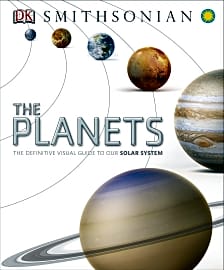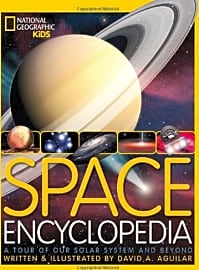The 10 Best Astronomy Books

This wiki has been updated 37 times since it was first published in September of 2015. You won't know if you are inspiring an astronaut or a cosmologist if you give someone one of these astronomy books, but you can be certain that you will have provided a thought-provoking and enjoyable gift. Our selection includes editions specifically written to appeal to youngsters through to some for more advanced students, and many of them contain breathtaking, full-color images. When users buy our independently chosen editorial picks, we may earn commissions to help fund the Wiki.
Editor's Notes
January 15, 2020:
This list contains a variety of astronomy books to satiate different needs, from practical stargazing guides and volumes full of awe-inspiring photos to children's books that will pique a youngster's interest. You'll find predominately layperson-friendly tomes, rather than math and physics intensive texts.
We added Astronomy: A Self-Teaching Guide for aspiring students and autodidacts at the expense of the respectable, yet slightly dry The Cosmos, which is a textbook geared toward college students. A Self-Teaching Guide takes many of the same concepts and distills them in a manner that's easy to digest without the help of a professor, and is a bit more accessible. It also has helpful self-tests, reviews, learning goals and objectives, and online resources.
While we still think 50 Things to See is a solid book for breaking into home stargazing, we felt it was a bit too limited in its scope and opted to replace it with the more comprehensive Turn Left at Orion. Turn Left is good for newbies with simple home telescopes to go out and locate hundreds of night sky objects without too much extra padding. Alternatively, NightWatch: A Practical Guide and The Backyard Astronomer's Guide are more involved, further covering how to choose and use a telescope, as well as touching on astrophotography and including an abundance of charts. All three volumes consider the southern hemisphere.
One of Many, Many Revolutions
He discovered that Venus has phases, just like the Moon, a phenomenon that Copernicus' heliocentric model had long since accounted for.
Before Galileo Galilei caught wind of the first telescope, a Dutch invention, and decided to build his own, astronomy, the "law of the stars," was limited to only the celestial bodies that could be perceived with the naked eye. The Earth was believed to be at the center of the solar system and planetary motion was calculated using Babylonian, Greek, and Hellenistic mathematics. Retrograde motions were observed and the geocentric model of the solar system was established.
Nicolaus Copernicus disagreed with the long-standing geocentric model. Using mathematics, Copernicus theorized that the Earth is in fact not at the center of the solar system, the Sun is. Unfortunately, the telescope had yet to be invented and Copernicus was unable to prove his theories correct. He published his findings in his most famous book, De revolutionibus orbium coelestium, and died having never seen the true fruits of his labors.
Three years after Copernicus' death, Tycho Brahe was born. He read Copernicus' book, but only partially accepted it. While Copernicus asserted that all of the planets, including Earth, revolve around the Sun, Brahe insisted that the Sun revolves around the Earth, despite agreeing that all of the other planets revolve around the Sun. With near-unlimited funds at his disposal and a golden prosthetic nose to highlight the size of his ego, Brahe built an enormous observatory, Uraniborg, the first of its kind, and embarked on a quest to prove his predecessor wrong.
Brahe made daily observations and kept an obsessively detailed record, so detailed that he eventually required an assistant, Johannes Kepler, to help keep track of the mountain of data he was rapidly collecting.
Thanks to Brahe's data, and being the brilliant star that he was, Kepler soon formulated his three laws of planetary motion, each of which supported Brahe's theory that the planets revolve around the Sun while the Sun revolves around the Earth. Alas, a mere eight years before the invention of the telescope would inevitably prove him wrong, Brahe died, his ego intact.
Fascinated by Brahe's data, Kepler's laws, and his very own, newly crafted telescope, Galileo made an amazing observation that no naked eye had ever made or ever could. He discovered that Venus has phases, just like the Moon, a phenomenon that Copernicus' heliocentric model had long since accounted for. He published his findings in his Dialogue Concerning the Two Chief World Systems and was promptly suspected of heresy by the Roman Inquisition.
What happened after, you will no doubt learn about in whichever astronomy book you choose to buy.
The Beauty of Astronomy Books
Quite possibly the simplest and most effortless pastime known to humankind, stargazing has occupied people of all ages, across all continents, for millennia. From shooting stars to evil omens, changes in the night sky have both fascinated and disturbed kings and peasants alike. To this day, the cosmos continues to be the inspiration behind countless theories, stories, dreams, and careers.
Quite possibly the simplest and most effortless pastime known to humankind, stargazing has occupied people of all ages, across all continents, for millennia.
Whether it's identifying constellations, peering through a telescope at the Great Red Spot of Jupiter or the craters on the Moon, taking time-lapse photographs of meteor showers, or listening to signals at a radio array, astronomy has something for everyone. All one needs to know is what to look or listen for, where to look or listen, and when.
What makes the cosmos so interesting, though, is not the mere act of observing it, but observing it while knowing how it works and who was the first to discover each object or phenomenon. Who was the first to explain the rings of Saturn? Who was the first to explain why Betelgeuse, the shoulder of Orion, twinkles?
The beauty of astronomy books lies not in their glossy, color photographs, but rather in their ability to place each comet, each moon, each mission to Mars within the context of a grander scheme, a plan to explore and explain the Universe.
Choosing the Best of the Best
When choosing an astronomy book that best suits your needs, it's important to keep in mind any astronomy-based hobbies you might be interested in developing.
Likewise, a stargazing guide about astrophotography may not contain the information you need to better understand the goals of NASA or the ESA.
An astronomy book designed for kids is not going to offer detailed advice on how to get started with astrophotography, which lenses you will need, how to mount your camera for time-lapse photography, or how to attach a camera to a telescope. Likewise, a stargazing guide about astrophotography may not contain the information you need to better understand the goals of NASA or the ESA.
For those interested in an astronomy book that provides a more general overview, it's good to keep in mind your prior knowledge. An astronomy textbook designed to keep university students intrigued for an entire semester could very well leave a younger student feeling overwhelmed, like "a mote of dust suspended in a sunbeam," to use Carl Sagan's words.
Whether it's astronauts' anecdotes, brief histories of giants, or star charts showing the precise locations of constellations throughout the year, every astronomy book is bound to feature aspects of astronomy that will surely pique your interest, but no single book will feature all of them.















